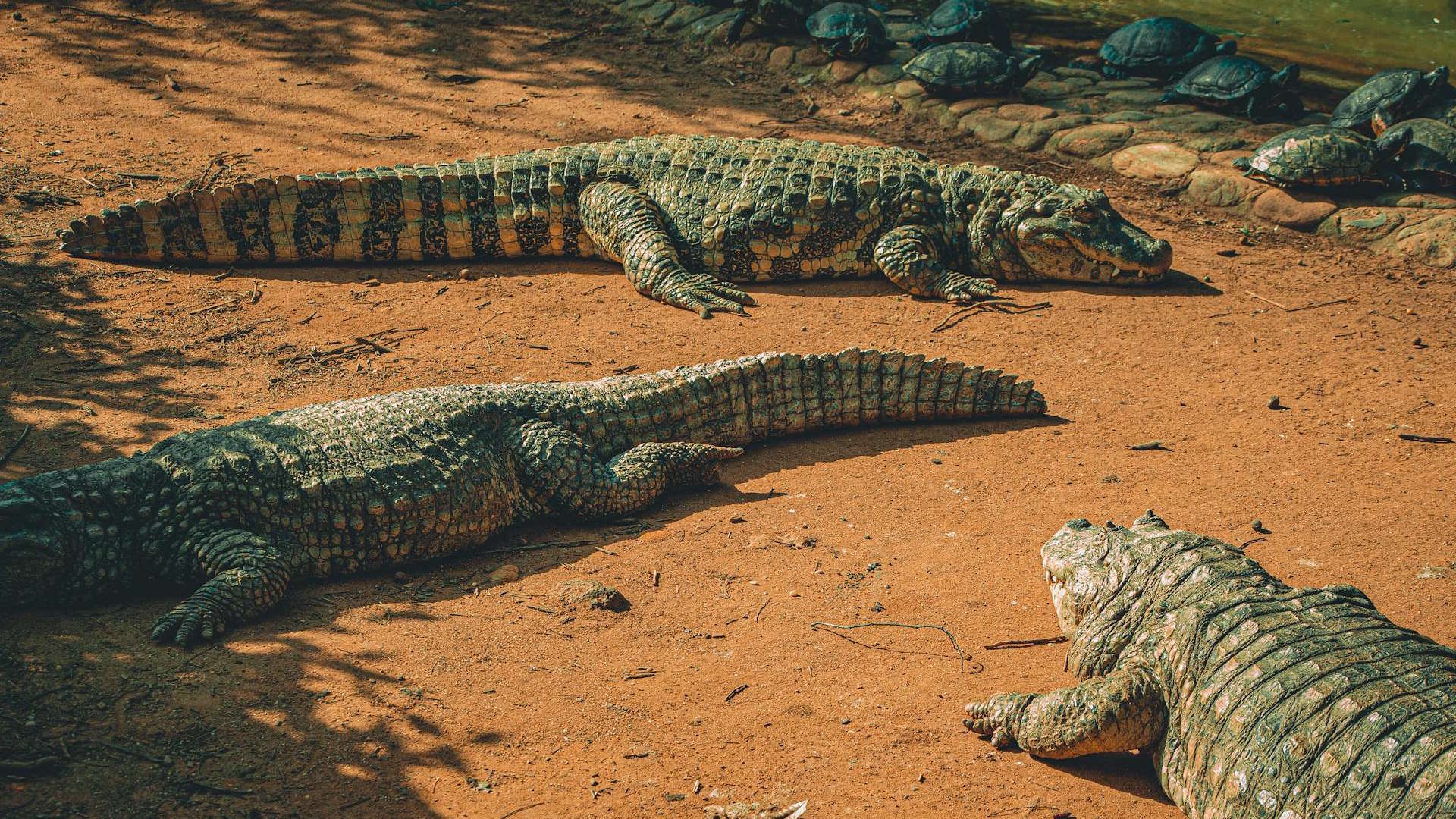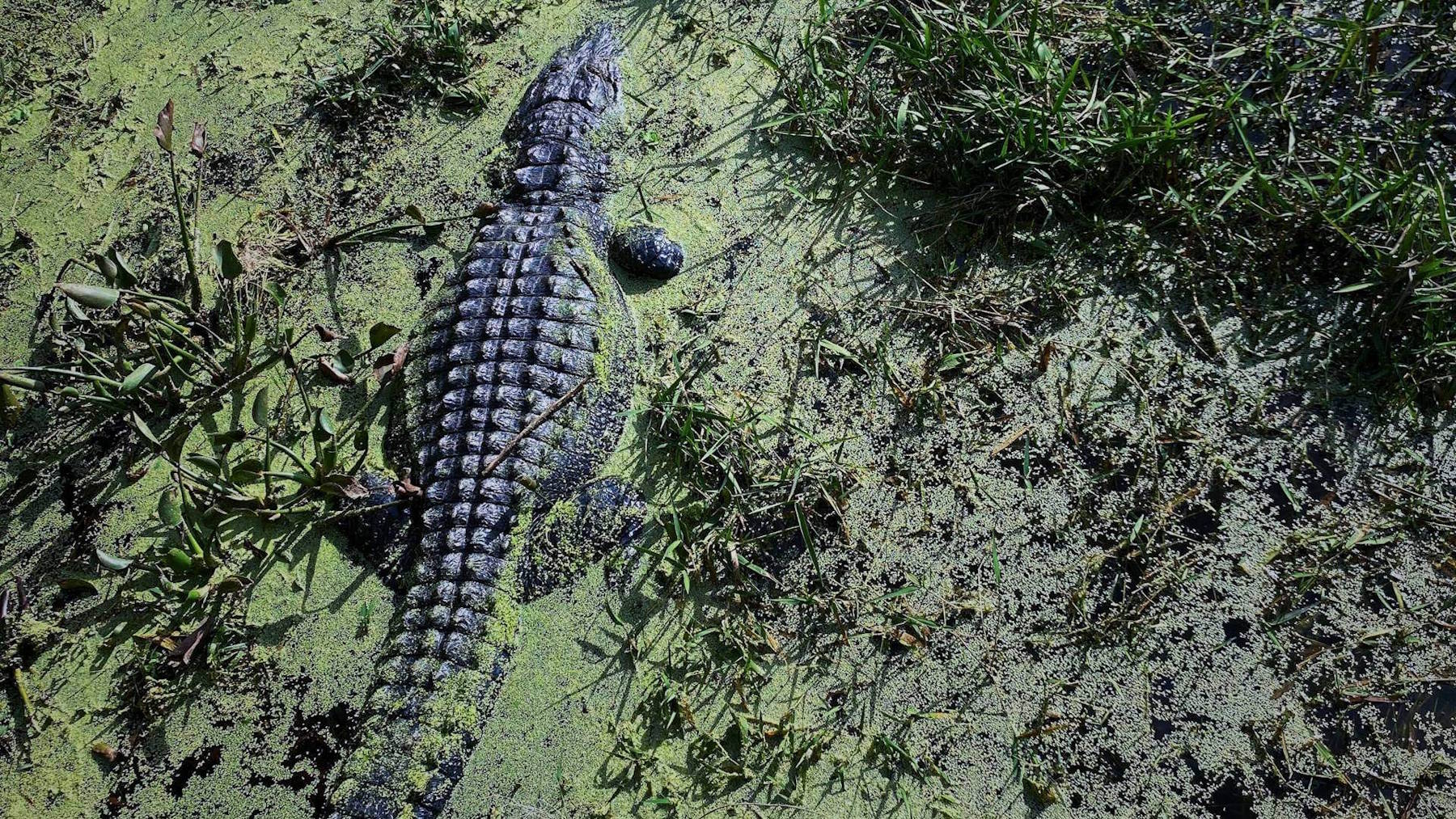Reptiles have roamed the Earth for over 300 million years, evolving remarkable survival mechanisms that include some of the most potent venoms and deadly physical attributes in the animal kingdom. While most reptiles pose little threat to humans, a select few have earned fearsome reputations due to their capacity to cause serious injury or death. In this comprehensive exploration, we’ll examine the world’s most dangerous reptiles, ranked according to their lethality to humans based on venom toxicity, aggressive tendencies, annual fatality rates, and physical capabilities. It’s important to note that many of these animals only attack humans when threatened, and conservation efforts are crucial for many species on this list. Understanding these creatures not only helps us appreciate their evolutionary adaptations but also promotes safer coexistence in areas where human and reptile habitats overlap.
Inland Taipan (Oxyuranus microlepidotus)
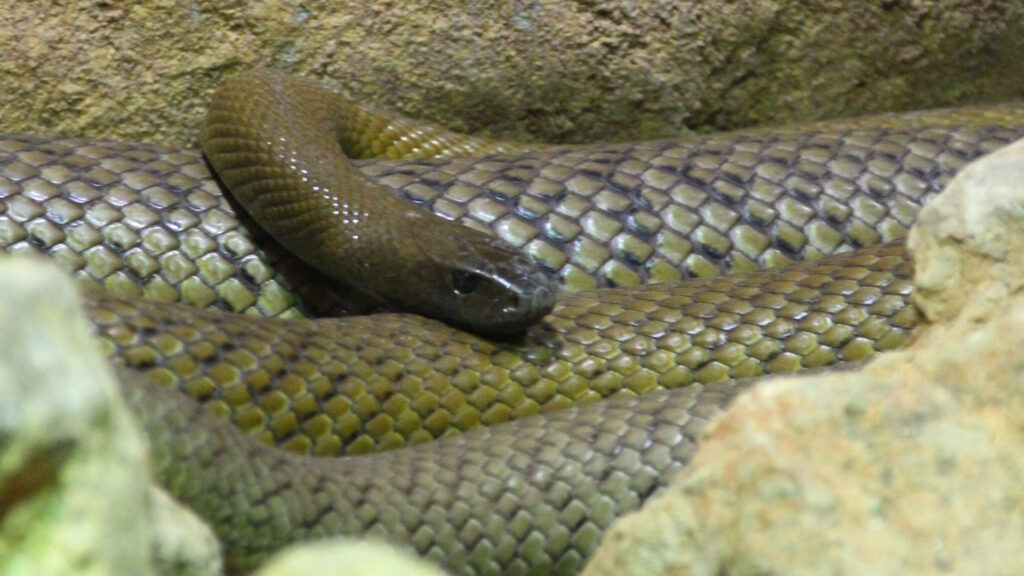
Topping our list is Australia’s inland taipan, commonly known as the “fierce snake” – possessing the most toxic venom of any land snake on the planet. A single bite delivers enough venom to kill approximately 100 adult humans, with its neurotoxic cocktail being nearly 200-250 times more potent than that of a common cobra. Despite this extreme toxicity, the inland taipan actually causes few human fatalities due to its remote habitat in the arid regions of central east Australia, away from dense human populations. The snake is naturally shy and reclusive, preferring to avoid confrontation when possible, which further reduces human encounters. Without antivenom treatment, victims may experience paralysis, uncontrollable bleeding, and death within 30-45 minutes, making rapid medical intervention essential in the rare event of a bite.
Eastern Brown Snake (Pseudonaja textilis)

While the inland taipan may possess the most potent venom, the eastern brown snake claims more lives in Australia due to its proximity to populated areas and aggressive defensive behavior when threatened. This fast-moving snake, capable of reaching speeds up to 12 mph, delivers a potent neurotoxic venom that rapidly affects the victim’s cardiovascular system, causing hypotension, cardiovascular collapse, and potentially death. Eastern browns are responsible for more snake-related deaths in Australia than any other species, with their slender build allowing them to infiltrate suburban areas and farmlands where human encounters are more likely. Their characteristic defensive posture involves raising their body off the ground in an S-shape, ready to strike repeatedly if cornered, making them particularly dangerous during surprise encounters. What makes them even more hazardous is that their bites are often painless initially, leading victims to underestimate the severity until life-threatening symptoms develop.
Saltwater Crocodile (Crocodylus porosus)

The saltwater crocodile represents a different kind of lethal threat – one based on physical power rather than venom. As the largest living reptile, with males regularly exceeding 20 feet in length and weighing over 2,000 pounds, these apex predators have been responsible for hundreds of human fatalities across their range from northern Australia through Southeast Asia to eastern India. Their hunting strategy involves ambushing prey at the water’s edge with explosive speed, capable of lunging at 12-14 mph for short bursts, before dragging victims into water to drown them in a deadly “death roll” maneuver. Saltwater crocodiles possess the strongest measured bite force of any animal, exerting pressure up to 3,700 pounds per square inch – enough to crush a human skull or limb with ease. Unlike many animals on this list, “salties” may actively hunt humans and have been known to stalk prey over multiple days, exhibiting problem-solving intelligence that makes them particularly dangerous predators.
Coastal Taipan (Oxyuranus scutellatus)

The coastal taipan, close relative to the inland taipan, combines extreme venom potency with a higher likelihood of human encounters due to its habitat along Australia’s eastern and northern coastal regions. Before antivenom became available in 1956, the mortality rate from untreated coastal taipan bites approached a staggering 100%, with death occurring sometimes within just 2-4 hours. Their venom contains a unique mixture of neurotoxins, hemotoxins, myotoxins, and procoagulants that simultaneously attack the victim’s nervous system, blood, muscles, and organs, making it particularly devastating to the human body. When threatened, the coastal taipan can deliver multiple strikes with surgical precision, injecting larger venom loads than most other species due to their longer fangs (up to 12mm) and more efficient venom delivery system. Adding to their danger, these snakes are highly aware of their surroundings and can react defensively to human movements from surprisingly long distances, sometimes exceeding 6 feet.
Black Mamba (Dendroaspis polylepis)
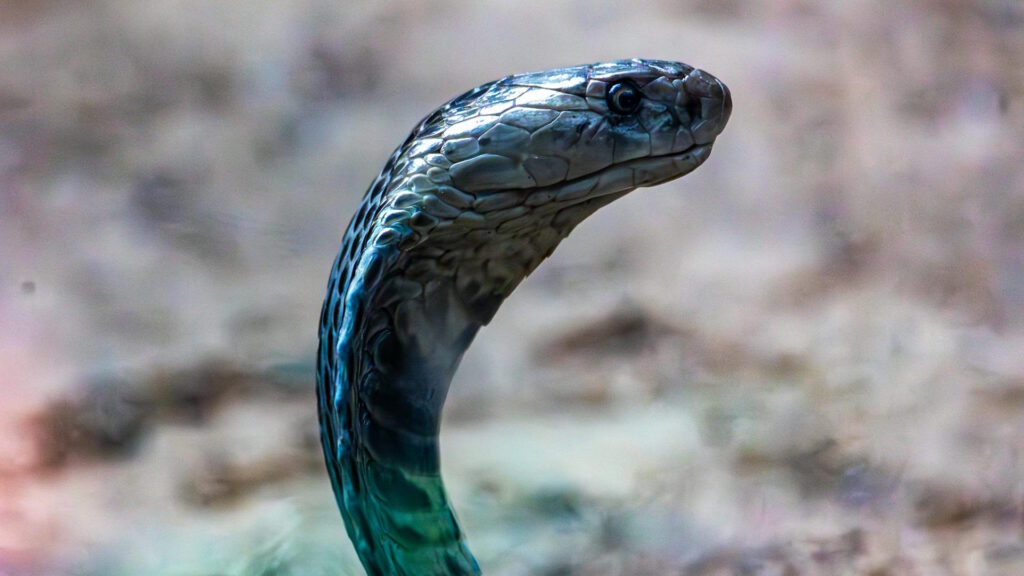
Africa’s black mamba has earned its fearsome reputation through a combination of speed, aggression when cornered, neurotoxic venom, and impressive length reaching up to 14 feet. Despite its name, the snake’s coloration ranges from olive to grayish-brown, with the black referring to the inside of its mouth displayed during threat displays. What makes the black mamba particularly dangerous is its speed (up to 12.5 mph) and ability to strike repeatedly, delivering multiple doses of neurotoxic venom that causes respiratory paralysis in victims. Without antivenom, the mortality rate approaches 100%, with death occurring within 7-15 hours, though symptoms can begin manifesting in as little as 10 minutes. Unlike many snakes that prefer retreat, black mambas may stand their ground when threatened, raising the front third of their body off the ground in a terrifying display before potentially launching an attack, making encounters particularly dangerous for humans in rural parts of sub-Saharan Africa.
Russell’s Viper (Daboia russelii)
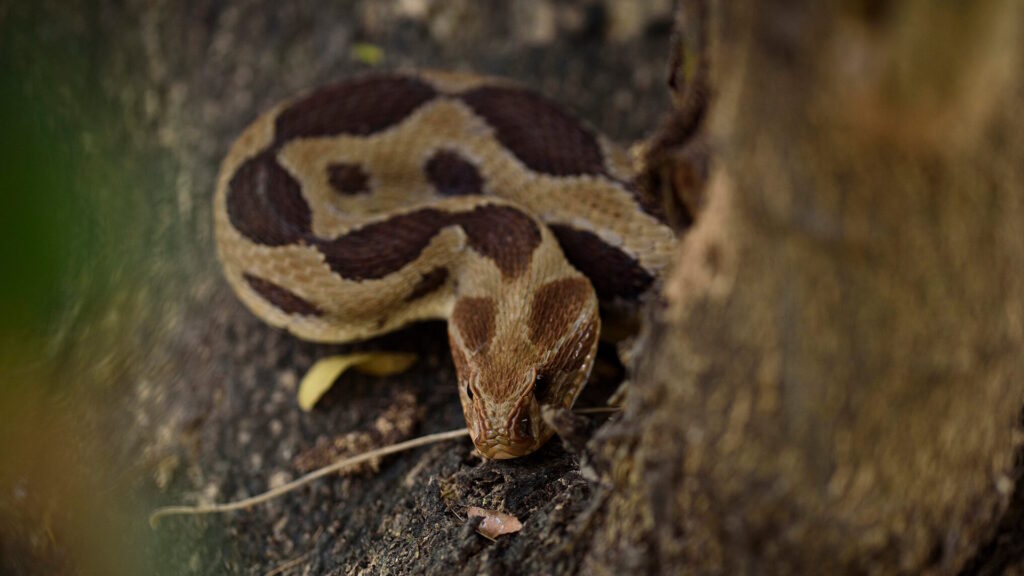
Responsible for more human fatalities in its range than any other snake species, Russell’s viper causes thousands of deaths annually across the Indian subcontinent, Southeast Asia, and parts of China. This heavy-bodied snake delivers a particularly painful bite, injecting a complex hemotoxic venom that causes massive internal bleeding, tissue necrosis, kidney failure, and often irreversible pituitary gland damage in survivors. What makes Russell’s viper particularly problematic from a public health perspective is its abundance in agricultural areas where rural workers encounter them during farming activities, often without quick access to medical facilities that can provide the necessary antivenom. The snake’s distinctive warning system involves producing a loud, sustained hissing sound when threatened, though many bite victims report accidentally stepping on these well-camouflaged reptiles before any warning is given. In some regions of India, Russell’s viper bites are so common that they represent a significant economic burden due to medical costs and loss of agricultural productivity.
King Cobra (Ophiophagus hannah)
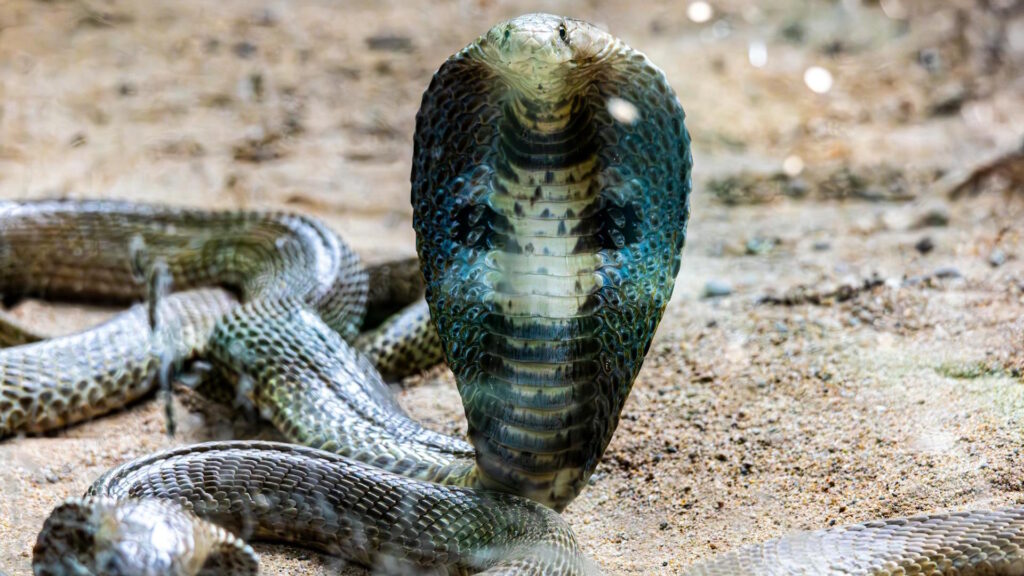
The king cobra earns its place on this list not only for its highly potent neurotoxic venom but also for being the world’s longest venomous snake, reaching lengths of up to 18 feet. A single bite from this magnificent reptile can deliver enough neurotoxin to kill 20 adult humans or even an elephant, with death occurring within 30 minutes in severe cases. Unlike many snakes, king cobras are known for their intelligence, recognizing familiar humans and even demonstrating problem-solving abilities in captivity. What makes them particularly dangerous is their unique defensive behavior – when threatened, they can raise up to one-third of their body off the ground, flare their distinctive hood, and deliver accurately placed strikes at chest or head height of an adult human. King cobras are also the only snake species known to construct nests for their eggs, and females guarding nests display heightened aggression, making accidental encounters in forests across their South and Southeast Asian range potentially deadly without prompt medical intervention.
Nile Crocodile (Crocodylus niloticus)

The Nile crocodile is responsible for more human fatalities annually than any other crocodilian species, estimated to kill hundreds of people each year across sub-Saharan Africa. These massive reptiles can grow to over 16 feet long, weigh more than 1,600 pounds, and possess bite forces exceeding 5,000 newtons – easily capable of crushing human bones. What makes Nile crocodiles particularly dangerous is their opportunistic hunting behavior and prevalence near villages and communities where people rely on rivers for drinking water, bathing, fishing, and transportation. Unlike some predators, Nile crocodiles have been documented as man-eaters that may actively target humans as prey, particularly during their breeding season when territorial aggression peaks. Their ambush hunting technique involves remaining nearly completely submerged, with only their eyes and nostrils visible before lunging with explosive speed, making it extremely difficult for victims to react in time when attacked at water’s edge.
Saw-Scaled Viper (Echis carinatus)
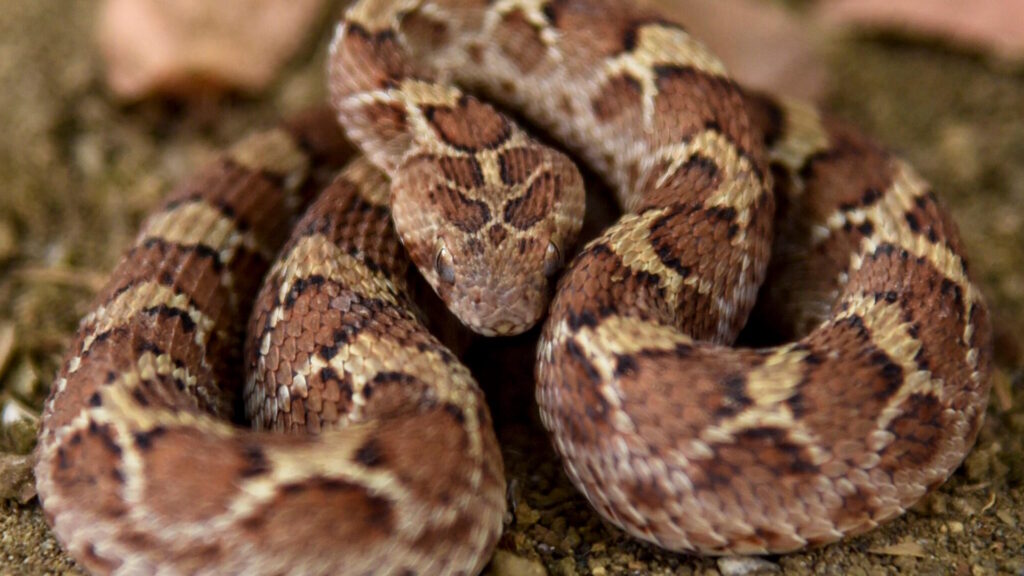
Often referred to as the “little killer,” the saw-scaled viper is responsible for more human deaths globally than any other snake species due to its widespread distribution across arid regions of Africa, the Middle East, and the Indian subcontinent. Despite its small size, rarely exceeding 2-3 feet, this snake delivers a hemotoxic venom that causes blood coagulation disorders, internal bleeding, and tissue necrosis, with untreated mortality rates ranging from 10-20%. The saw-scaled viper derives its name from its unique warning behavior of rubbing sections of its body together to produce a distinctive rasping sound similar to sandpaper, giving potential threats a clear audio warning before striking. What makes these vipers particularly dangerous is their combination of aggressive temperament when threatened, nocturnal activity patterns increasing accidental encounters, and prevalence in rural areas with limited medical facilities capable of providing antivenom treatment. Their small size also makes them difficult to spot in their natural sandy habitats, resulting in many bites occurring when they’re accidentally stepped on.
Komodo Dragon (Varanus komodoensis)

The Komodo dragon represents a unique threat as the world’s largest lizard, with adult males reaching lengths of 10 feet and weights exceeding 300 pounds. While long believed to rely solely on bacteria-laden saliva to weaken prey, research has confirmed these reptiles actually possess venom glands that produce toxins causing rapid drops in blood pressure, inhibited blood clotting, and shock in victims. Komodo dragons employ a hunting strategy that combines ambush attacks with incredible patience – they can deliver a single bite to larger prey, then track the wounded animal for miles over several days until it succumbs to the venom’s effects. Their powerful limbs, serrated teeth, and armored scales make them formidable predators capable of taking down prey much larger than themselves, including water buffalo. Though human fatalities are rare due to their limited range on a few Indonesian islands, Komodo dragons have been responsible for several attacks on villagers and tourists who ventured too close without proper protection, with some incidents proving fatal due to massive blood loss and trauma.
Philippine Cobra (Naja philippinensis)
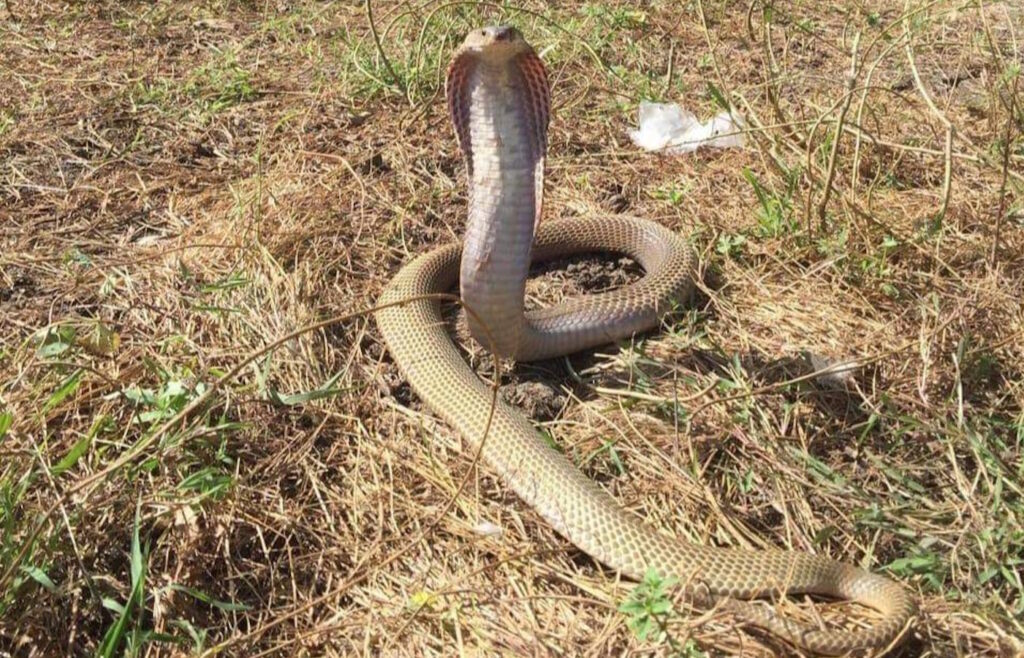
The Philippine cobra has earned its reputation as one of the world’s deadliest snakes due to its highly potent neurotoxic venom and unique defense mechanism – the ability to spit venom accurately at a threat’s eyes from distances up to three meters. This cobra’s venom affects the respiratory system so rapidly that death from respiratory paralysis can occur within 30 minutes, giving victims precious little time to seek the antivenom necessary for survival. What makes the Philippine cobra particularly dangerous is its tendency to inhabit agricultural areas and outskirts of villages across the Philippine archipelago, increasing human encounter rates compared to more reclusive venomous species. Unlike many snakes that use venom primarily for hunting, the Philippine cobra has evolved defensive venom-spitting that can cause permanent blindness if the toxin reaches the eyes and is not immediately washed out with copious amounts of water. Their relatively calm disposition can change instantly when threatened, making them unpredictable and dangerous when cornered by unsuspecting farmers or encountered in rural homes.
American Alligator (Alligator mississippiensis)
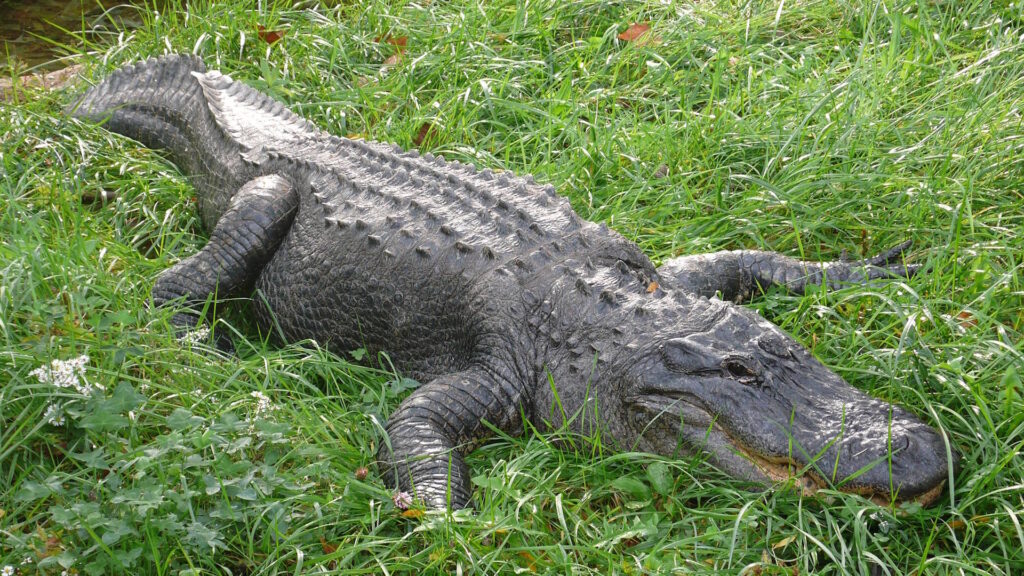
While often overshadowed by its more aggressive crocodilian relatives, the American alligator still ranks among the world’s most dangerous reptiles with its powerful jaws capable of generating bite forces exceeding 2,000 pounds per square inch. These prehistoric-looking reptiles, reaching lengths of 13-15 feet and weights over 1,000 pounds, are responsible for occasional fatal attacks throughout their southeastern United States range, particularly in Florida where human population growth increasingly encroaches on alligator habitat. What makes alligators particularly dangerous is their stealth in water, where they can remain nearly completely submerged with only their eyes and nostrils visible, before lunging with explosive speed at prey or perceived threats at the water’s edge. Female alligators display heightened aggression when protecting their nests and young, sometimes charging at humans who unknowingly approach these sensitive areas during breeding season. Though typically wary of humans, alligators that have been illegally fed lose their natural fear, creating dangerous situations in recreational areas where they begin to associate humans with food sources.
Beaded Lizard (Heloderma horridum)
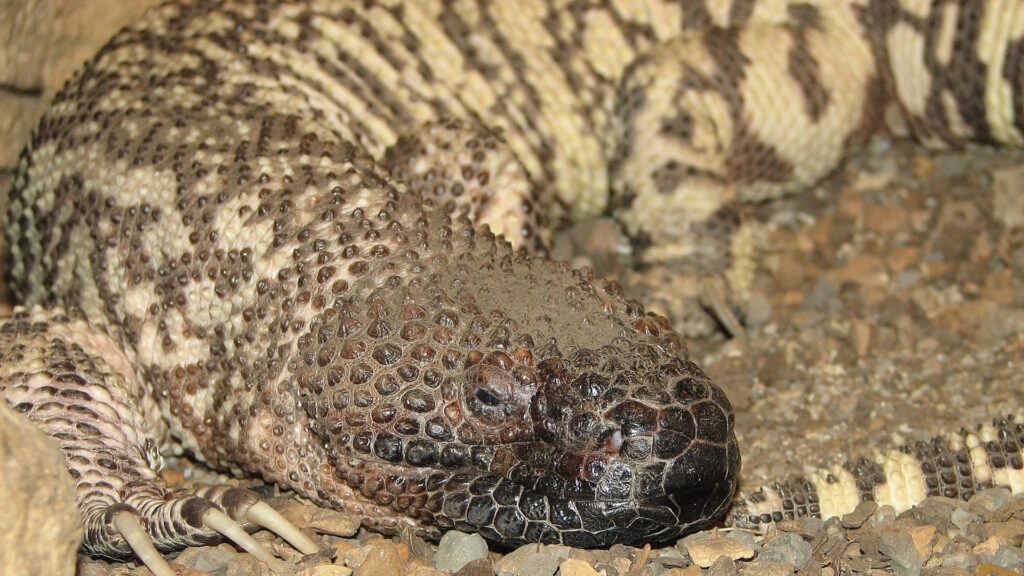
The beaded lizard, alongside its close relative the Gila monster, represents one of only two known venomous lizard species native to North America, found primarily in Mexico with limited distribution in Guatemala. Unlike the fast-acting venoms of many snakes, the beaded lizard delivers a complex cocktail of toxins through a unique chewing motion that allows venom to flow from modified salivary glands in its lower jaw through grooved teeth and into the wound. Their venom contains powerful compounds that cause excruciating pain, rapid swelling, drop in blood pressure, and respiratory difficulty, though fatalities are extremely rare due to the lizard’s relatively slow movement and reluctance to bite unless severely provoked. What makes beaded lizards particularly unique among dangerous reptiles is their venom’s medical potential – researchers have developed the diabetes medication exenatide (Byetta) based on a hormone found in their venom that helps regulate insulin. Though less encountered by humans than many other reptiles on this list due to their declining populations and protected status, beaded lizards still represent a significant medical emergency if a bite occurs, with symptoms potentially lasting for days without proper treatment.
Conservation Considerations and Human Coexistence
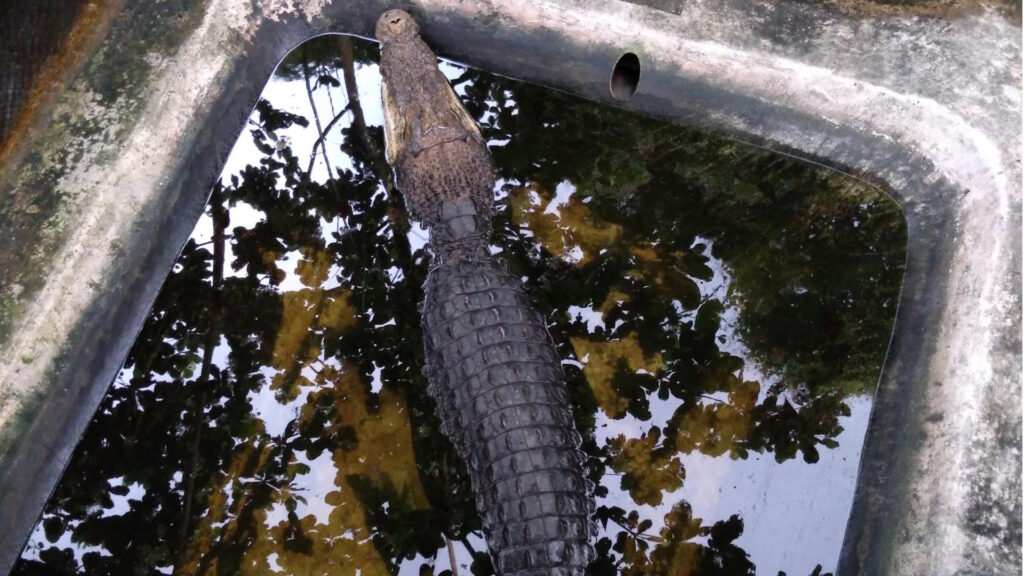
Despite their potential danger to humans, each reptile on this list plays a vital ecological role and many face significant conservation challenges due to habitat destruction, climate change, and deliberate killing out of fear. Educational outreach programs in regions with dangerous reptile populations have proven effective at reducing both human fatalities and retaliatory killings of these animals by teaching proper precautions and response protocols. Many venomous reptiles are now recognized for their medical importance, with compounds from their venoms being developed into life-saving medications for conditions ranging from heart disease to chronic pain. Conservation efforts must balance human safety concerns with the ecological importance of these species, particularly as human development continues to fragment natural habitats and increase encounter rates. Understanding that most dangerous reptiles attack humans only defensively, and that fatalities often result from lack of access to proper medical care rather than the inevitability of the bite itself, helps promote more rational approaches to coexistence with these fascinating yet potentially lethal reptiles.
Conclusion
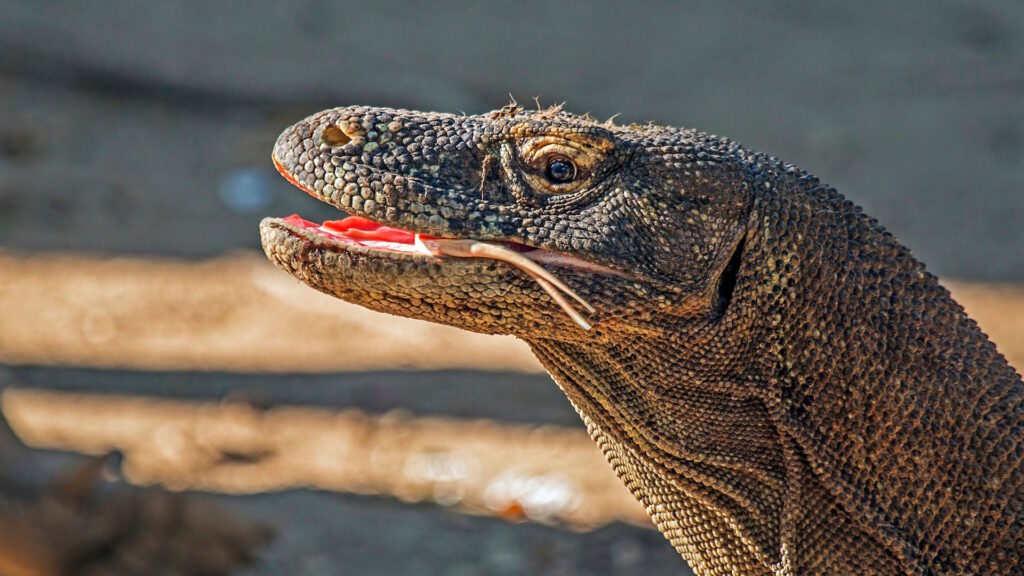
While this ranking highlights the most lethal reptiles based on their capacity to harm humans, it’s important to remember that fatal encounters remain relatively rare compared to other causes of death worldwide. Most of these remarkable animals prefer to avoid human contact entirely, using their defensive capabilities only when they perceive a threat. As we continue to expand into previously wild areas, learning to identify dangerous species, understand their behaviors, and implement appropriate safety measures becomes increasingly important. Conservation efforts for these often-misunderstood creatures are vital not only for maintaining biodiversity but also for the potential medical breakthroughs their venoms may hold. Through education, respect, and appropriate precautions, humans and even the world’s most dangerous reptiles can coexist with minimal conflict, preserving these evolutionary marvels for future generations to appreciate—from a safe distance.

